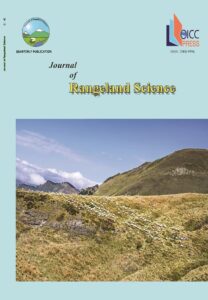Impact of Sowing Date on Growth, Phenology and Yield of Three Ecotypes of Astragalus cyclophyllon G. Beek in Semirom Rangelands, Iran
Authors
Abstract
In order to compare the effect of sowing date on plant growth, development stages and forage yield of three Astragalus cyclophyllon G. Beek ecotypes, a study was conducted in 2010-2011 cropping years in Hanna station, Semirom county, Iran. Three Astragalus ecotypes were originated from Hanna, Golpayegan and Chadegan in Isfahan province, Iran. Seeds were sown in spring and autumn sowing dates using split plot design based on completely randomized blocks in three replications. The results showed that the effect of year was not significant, but the ecotype by sowing date interaction effect was significant on yield and yield components (P<0.01). The required temperature units such as Growth Degree Days (GDD) for spring and autumn sowing dates were 2848°C and 2793°C, respectively. The effect of sowing date on emergence percent and forage yield was significant (p<0.05). Regardless of the ecotype type, the percentage of seed germination and forage yield in autumn sowing were 51 and 60% higher than spring sowing date, respectively. The dry weight of Hanna ecotype in autumn cultivation was 1280 kg ha-1, which was 55.8% and 58% higher than Golpayegan and Chadegan ecotypes, respectively. The reason for the increased yield in Hanna ecotype was of a higher ratio of its leaves. It was concluded that cultivation of Hanna ecotypes due to its higher forage production was recommended for cultivation in dryland farming and also to prevent its extinction in the study region.



